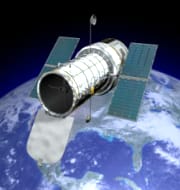2006 VW139/288P: Astronomers spot strange binary asteroid with comet-like features
International team of astronomers using NASA’s Hubble Space Telescope have spotted an unusual object called 2006 VW139/288P having two asteroids orbiting each other with comet-like features. These include bright halo of material, called a coma, and long tail of dust. The odd object is first known binary asteroid that is also classified as a main-belt comet.
Asteroids and comets
Asteroids and comets are believed to be ancient remnants of earliest years of formation of our solar system more than four billion years ago. Asteroids are known as inactive, rocky body orbiting the Sun. Comets are bodies of ice, rock and organic compounds that can be several miles in diametre and they can be at times active. Ice of comets can vaporise in sunlight forming an atmosphere (coma) of dust and gas and, sometimes, a tail of dust and/or gas.
2006 VW139/288P
Hubble was used to image asteroid in September 2016 just before it made its closest approach to Sun. The images revealed that it was actually not one, but two asteroids of almost the same mass and size, orbiting each other at a distance of 96 km.
It was discovered by Spacewatch in November 2006 and its possible cometary activity was seen in November 2011 by Pan-STARRS after that it was given comet designation of 288P. The more recent Hubble observations revealed ongoing activity in binary system.
The combined features of binary asteroid are wide separation, near-equal component size, high eccentricity orbit, and comet-like activity. These make it unique among few known binary asteroids that have a wide separation.
Significance: Understanding of 2006 VW139/288P’s origin and evolution may provide new insights into early days of solar system. The main-belt comets may help to answer how water came to a bone-dry Earth billions of years ago. As it is different from all other known binary asteroids, it will also help to answer some questions about how common such systems are in the asteroid belt.

Month: Current Affairs - September, 2017


